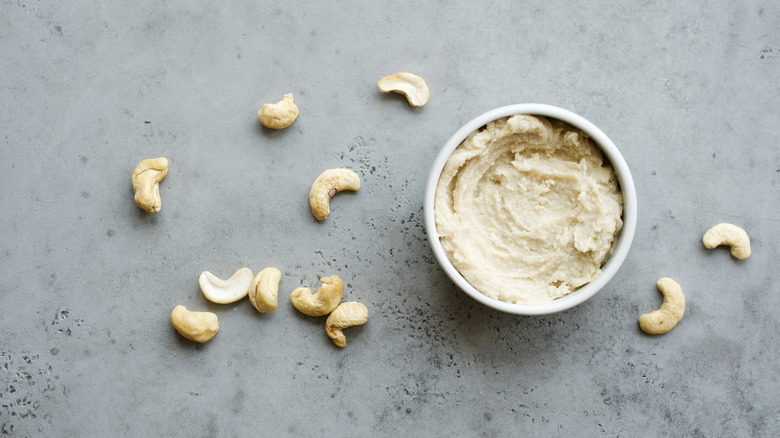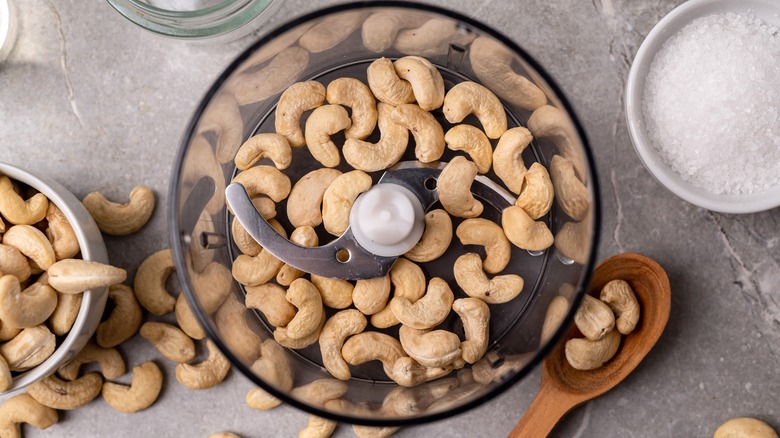If You Freeze Cashew-Based Sauce, You'll Ruin It. Here's Why
If you've spent any time snooping around in your vegan friend's kitchen, you've probably found a rather large stash of cashew nuts sitting somewhere in their cupboard. Why on earth would anyone need so many cashews, you might ask? They're only the single most multi-purposeful nut in a vegan or lactose-intolerant diet.
Cashews can be blended up in a food processor or blender to make a still-custardy vegan quiche or blended with water and strained through a cheesecloth for a fresh at-home dairy-free milk alternative. They're also commonly used to make alternative cheeses and they come in particularly handy when you're looking to make a creamy sauce or soup without the dairy.
However, if there's one thing that cashew cream can't do it's freeze. The problem is that after cashew cream freezes and thaws, the oils from the cashews and the liquids naturally separate. This automatically creates a less-than-ideal texture for the sauces you use your cashews in, one that's probably a touch more gritty than when you first made it. Fortunately, there is a way to get around that.
How to save frozen cashew cream
If you've found that the leftover cashew sauce that you pulled from the freezer has now thawed into a gritty, separated, sorry excuse for a dairy alternative, there is still hope. Before you throw it in the trash and settle for something else to eat, you can still salvage it. All you need to do is pull your blender back out and get ready to mix.
Once it's completely de-thawed, just throw your cashew sauce back in there, blend it up, and it will be as smooth as you remember it being on the day you made it in no time. Then you can toss it into your pasta, salad, or noodles like it's brand new. Of course, you'll still be left with a blender to clean. For that, we suggest using this foolproof method to easily, and safely, clean it — no hands necessary.

